Europeans are leaving their houses to go shopping, eat out, travel and visit cinemas as much as they did before the pandemic, in a sign of returning consumer confidence across the eurozone.
Data on economic activity in September suggest that European consumers feel emboldened by high Covid-19 vaccination rates, despite a slew of worrying economic news including higher energy bills, supply-chain disruptions and worries about the impact of an economic slowdown in China.
“For now, data remain consistent with a decent pace of recovery,” said Davide Oneglia, an economist at TS Lombard, a research and macroeconomic forecasting consultancy.
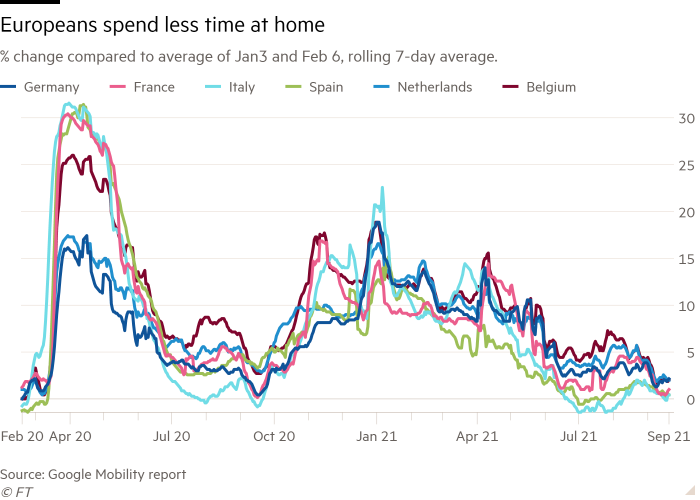
Some of the rebound is because schools have reopened and workers are returning to offices. This is reflected in use of airports and domestic public transport in the eurozone, which both reached their highest level since the start of the pandemic in early 2020, according to mobility data from Google and Apple respectively.
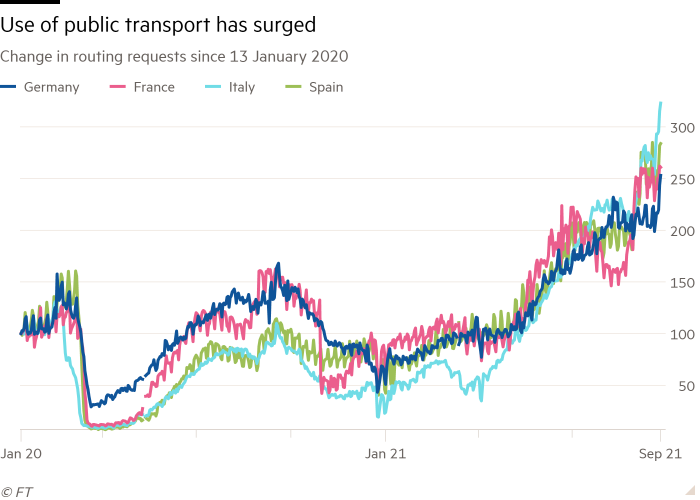
But an increase in shopping trips, eating out and going to the cinema also “suggests consumers are now more confident”, said Marion Amiot, senior economist at rating agency S&P. Cinema revenues have already returned to pre-pandemic levels, according to data from Box Office Mojo.
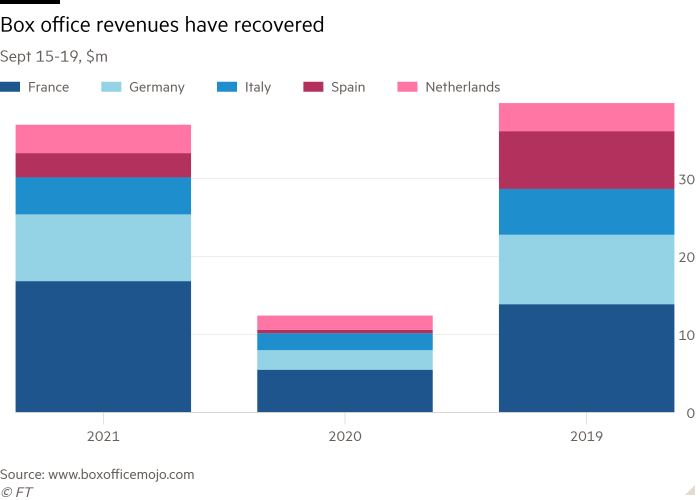
Policymakers increasingly monitor non-standard economic measures, such as mobility indicators, for a timely but less comprehensive snapshot of economic activity than official data.
The rise in consumer confidence comes amid a fall in Covid-19 infections and a doubling over the past three months in the number of fully vaccinated people. As of mid-September, nearly two-thirds of the eurozone’s population had received two jabs.
“Our recovery tracker posted a strong gain in the first half of September, rising by a cumulative 2.3 points to a new pandemic high,” said Nicola Nobile, economist at consultancy Oxford Economics. “The tracker gained solid momentum.”
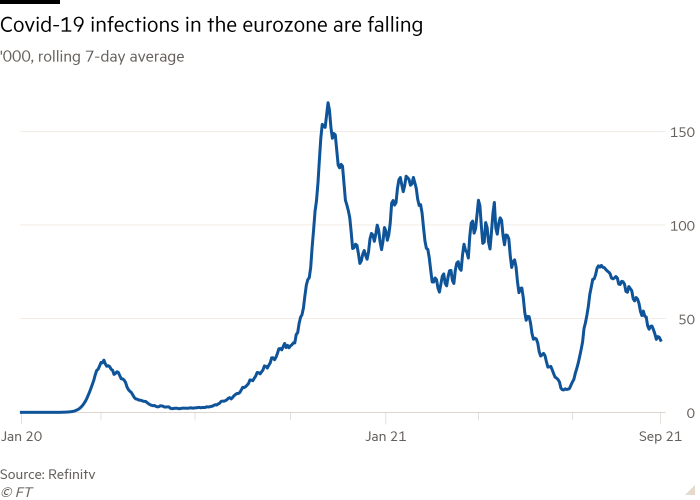
The strength of consumer confidence “supports our view that household consumption growth accelerated this quarter”, added Melanie Debono, senior Europe economist at Pantheon Macroeconomics.
As consumption accounted for 1.9 percentage points of the eurozone’s 2.2 per cent growth in the second quarter, Chiara Zangarelli of Nomura forecast that the bloc’s economic recovery would continue and predicted a 2.3 per cent expansion in the third quarter. The OECD also recently updated its eurozone economic forecast for this year.
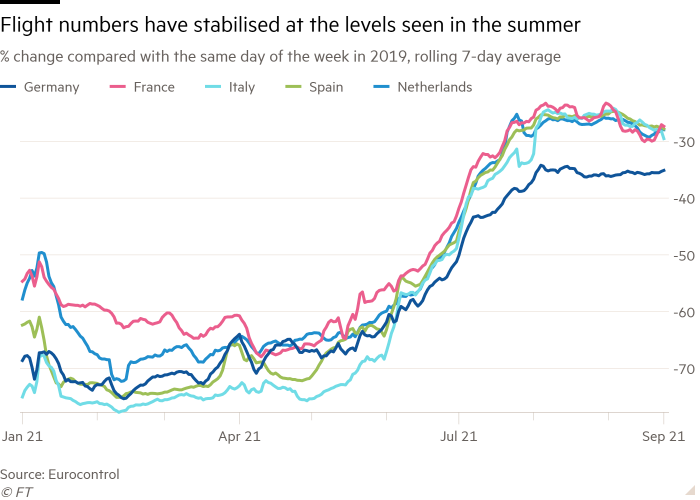
But eurozone growth may slow over the coming months. China’s economic slowdown could hit exporters, international travel is still about 30 per cent below pre-pandemic levels and supply-chain snags have hit manufacturers hard, as seen in an unexpectedly sharp drop in recent business sentiment surveys. German truck mileage data, which are seen as a proxy of industrial activity, also remain at a low for 2021.
The eurozone’s recovery lags behind the US and China, whose economies have already reached pre-pandemic levels.
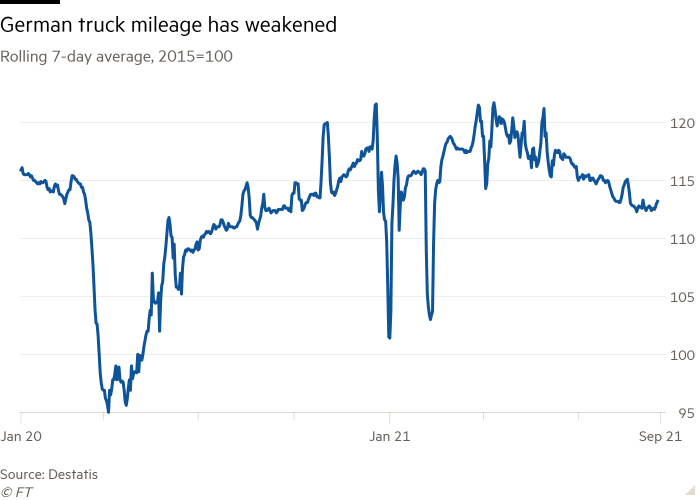
Nonetheless, an OECD weekly tracker of economic activity, which uses real-time high-frequency indicators, rose above 2019 levels at the beginning of September in most eurozone countries.
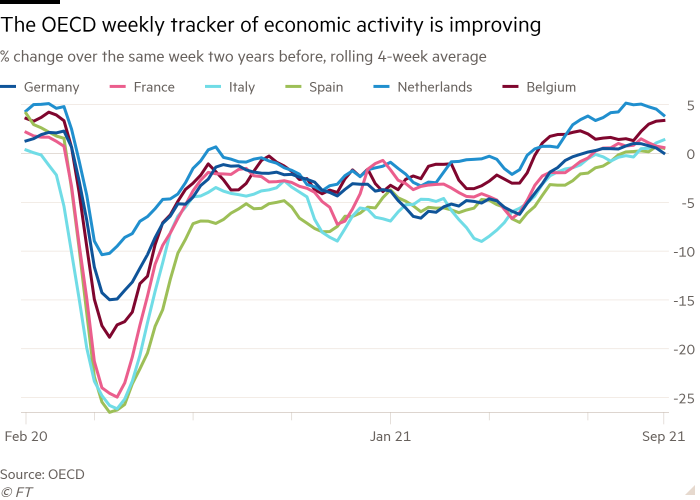
The labour market also remains strong, with job vacancies continuing to rise, according to data from job site Indeed.
This may give the European Central Bank confidence it can scale back its emergency pandemic programme of asset purchases next year, said Marchel Alexandrovich, economist at investment bank Jefferies. He forecast that the eurozone economy would return to its pre-pandemic level over the next two quarters.
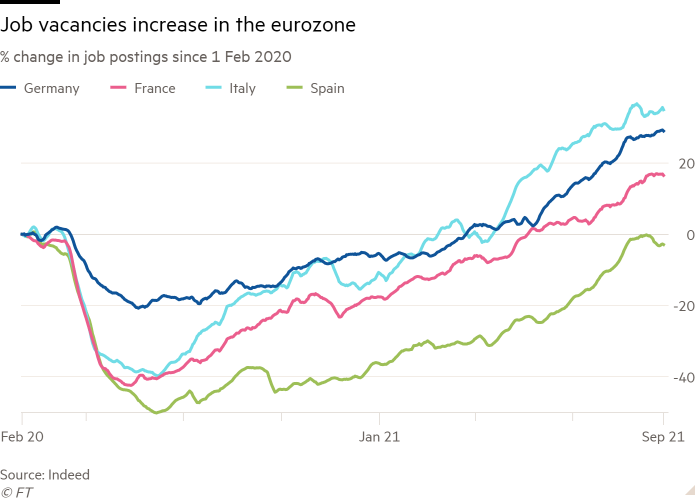
But, as Christine Lagarde, ECB president, said this month, the eurozone was “not out of the woods” and uncertainty was rising.
Kallum Pickering, senior economist at investment bank Berenberg, said: “Concerns about the Delta wave of Covid-19 infections, worsening supply shortages, surging energy prices, upheaval in parts of China’s overextended real-estate markets and elevated inflation add up to an unpleasant mix.”
"activity" - Google News
September 29, 2021 at 11:00AM
https://ift.tt/3kM63sG
Eurozone consumer activity returns to pre-pandemic levels - Financial Times
"activity" - Google News
https://ift.tt/3ddCXMh
https://ift.tt/2WkO13c
Bagikan Berita Ini














0 Response to "Eurozone consumer activity returns to pre-pandemic levels - Financial Times"
Post a Comment